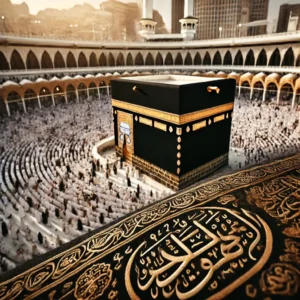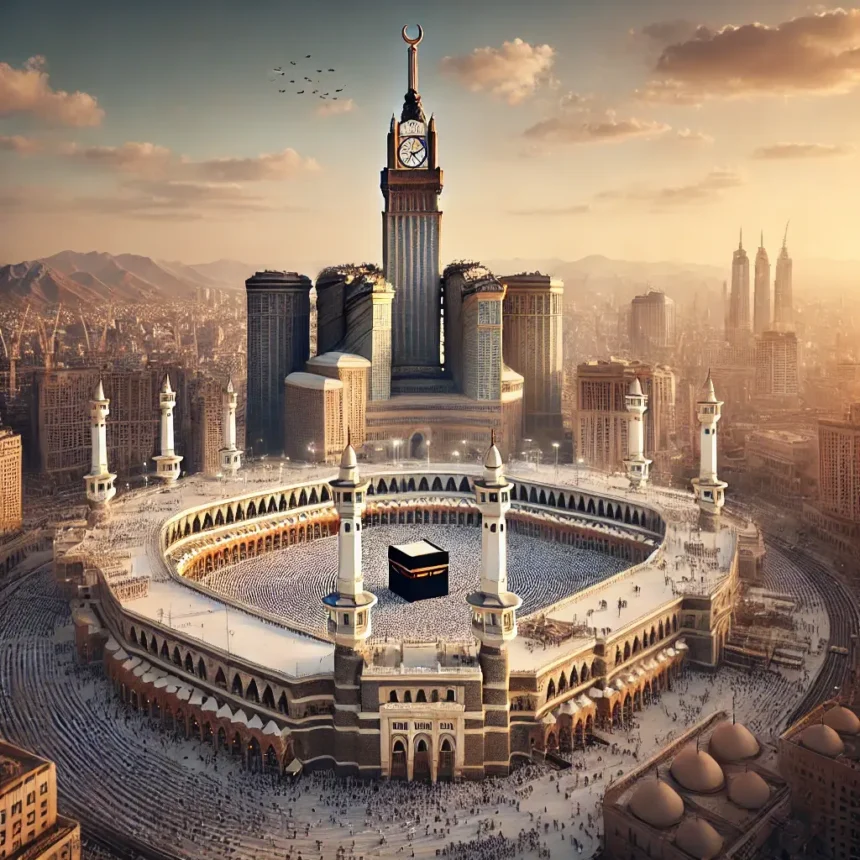Introduction
Mecca, located in Saudi Arabia, holds immense religious significance for over a billion Muslims around the world. The city is home to the holiest site in Islam, the Grand Mosque (Masjid al-Haram), and is where the Kaaba resides, a sacred structure that Muslims face during their prayers. Throughout history, Mecca has been a spiritual destination for Muslims, attracting millions of pilgrims annually for Hajj and Umrah.
Mecca: The Spiritual Center of Islam
Mecca is revered as the birthplace of the Prophet Muhammad and the religion of Islam. The city has always played a central role in the Islamic faith, symbolizing global unity and devotion for Muslims. For many, making a pilgrimage to Mecca at least once in their lifetime is one of the Five Pillars of Islam, an essential aspect of their religious obligations.
Pilgrims from every corner of the world travel to Mecca, creating a sense of brotherhood among Muslims. The city not only serves as a hub for religious activity but also as a reminder of the shared values and beliefs within Islam.
The Grand Mosque and the Kaaba
At the heart of Mecca stands the Grand Mosque, also known as Masjid al-Haram. This mosque is the largest in the world and surrounds the Kaaba, the most sacred site in Islam. Muslims face the Kaaba, a cuboid structure draped in black cloth, during their prayers (Qibla). Every year, millions of Muslims gather around the Kaaba during Hajj and Umrah to perform various religious rituals.
The Grand Mosque continues to expand, allowing more pilgrims to participate in the Hajj, which is one of the world’s largest annual gatherings. The pilgrimage atmosphere feels serene, as millions of believers gather for prayer and reflection.
The Significance of Hajj
Hajj is a mandatory religious duty for Muslims who are physically and financially able to perform it. This pilgrimage occurs annually in Mecca during the Islamic month of Dhu al-Hijjah. Hajj commemorates several key events in Islamic history, especially the actions of Prophet Ibrahim (Abraham), the patriarch of monotheism.
Pilgrims follow in the footsteps of Ibrahim by performing rites such as the Tawaf, which involves circling the Kaaba seven times, and the Sa’i, walking seven times between the hills of Safa and Marwah. These acts are symbolic of the trials that Ibrahim and his family endured.
The History of Mecca
The history of Mecca dates back thousands of years, making it one of the oldest cities in the Arabian Peninsula. The city is deeply rooted in the life of the Prophet Muhammad, who was born here in 570 CE. Mecca served as a trading hub long before the rise of Islam, but its religious significance grew tremendously with the advent of the Islamic faith.
During pre-Islamic times, the Kaaba was a site of worship for various tribes. After the revelation of Islam, the Kaaba was cleansed of idols, and it became a monotheistic site dedicated to the worship of Allah alone. Mecca soon became the spiritual heart of the Islamic world.
Modern Mecca
Over the centuries, Mecca has evolved into a modern city while still preserving its religious and historical roots. Today, it hosts millions of pilgrims from around the globe, with infrastructure and services that accommodate the needs of these visitors. The city has expanded to include hotels, shopping centers, and healthcare facilities, making it more accessible to those on their spiritual journey.
The Saudi government continues to invest in improving Mecca’s facilities to ensure a safe and meaningful experience for all pilgrims. Despite its modern advancements, Mecca remains a city of spiritual reflection and prayer and a place where Muslims deepen their connection to their faith.
The Role of Umrah in Islamic Devotion
Umrah is another form of pilgrimage to Mecca, and while it is not obligatory like Hajj, it holds immense value in Islamic tradition. Unlike Hajj, which Muslims perform only during specific dates, they can perform Umrah at any time of the year. Often referred to as the “lesser pilgrimage,” Umrah is equally significant as it allows Muslims to reaffirm their faith.
Many pilgrims choose to perform Umrah more than once, as it serves as a way to seek blessings, forgiveness, and spiritual rejuvenation. The rituals of Umrah are similar to those of Hajj but are less extensive.
The Cultural Impact of Mecca
Mecca’s influence extends beyond the religious realm. It is a cultural and historical symbol that reflects the diversity and unity within the Islamic world. As a melting pot of cultures, Mecca welcomes Muslims from different backgrounds, languages, and traditions. The city serves as a reminder of Islam’s global nature and the shared devotion that transcends borders.
The Economic Impact of Pilgrimage to Mecca
The pilgrimage to Mecca significantly impacts the economy of Saudi Arabia. Millions of pilgrims require transportation, accommodation, food, and various services during their stay. The hospitality industry thrives in Mecca, with numerous hotels and businesses catering to the needs of pilgrims.
The Saudi government plays a crucial role in ensuring the smooth functioning of Hajj and Umrah, investing in infrastructure, and providing services that support the region’s economic growth.
Environmental Challenges in Mecca
The environmental impact must be noticed, as millions of pilgrims visit Mecca each year. Waste management, air quality, and water consumption are among the primary concerns. Efforts are being made to minimize the ecological footprint of the Hajj and Umrah, with the government implementing sustainable practices to protect the environment.
Various initiatives aim to reduce waste, promote recycling, and encourage the use of eco-friendly resources to ensure that M.E.C.C.A remains sustainable for future generations.
Mecca in Islamic Scholarship
Scholars have studied and discussed M.E.C.C.A throughout history. Islamic scholars have written extensively about the city’s religious significance, the rituals of Hajj and Umrah, and the spiritual rewards associated with visiting M.E.C.C.A.
The city is often featured in Islamic literature, reflecting its importance in shaping the faith and lives of millions of Muslims around the world. Scholars continue to explore the rich history and religious significance of M.E.C.C.A, ensuring its legacy remains a central part of Islamic education.
The Future of Mecca
As the world changes, M.E.C.C.A continues to adapt to the growing number of pilgrims and the demands of modern life. Future developments are likely to focus on sustainability, accessibility, and enhancing the spiritual experience for all who visit.
The city has a rich history and religious importance. Its modern advancements make it a unique destination. Mecca will continue to hold a special place in the hearts of Muslims for generations.

FAQs
1. Why is M.E.C.C.A so important in Islam?
M.E.C.C.A is the holiest city in Islam and the birthplace of Prophet Muhammad. It houses the Kaaba, the direction of Muslim prayers, and is the site for Hajj.
2. What is the significance of the Kaaba?
The Kaaba is the most sacred site in Islam, and Muslims face it during their daily prayers. It is a symbol of unity in worship.
3. Can non-Muslims visit M.E.C.C.A?
No, M.E.C.C.A is restricted to Muslims only. Non-Muslims are not allowed to enter the holy city.
4. What is the difference between Hajj and Umrah?
Hajj is an obligatory pilgrimage that occurs annually, while Umrah is voluntary and can be performed at any time of the year.
5. How has M.E.C.C.A changed in recent years?
M.E.C.C.A has modernized with better infrastructure, hotels, and services to accommodate the growing number of pilgrims.
Conclusion
Mecca remains the spiritual heartbeat of Islam, attracting millions of Muslims each year for Hajj and Umrah. Mecca has a rich history and deep religious significance. Its evolving infrastructure adds to its uniqueness. The city will continue to play a vital role in the faith of Muslims. It will also impact the lives of Muslims worldwide.










